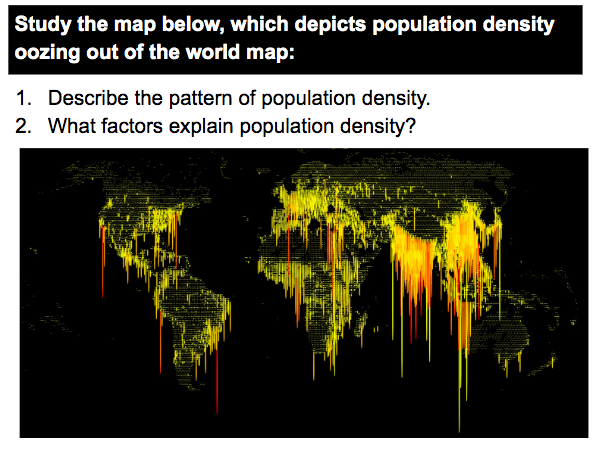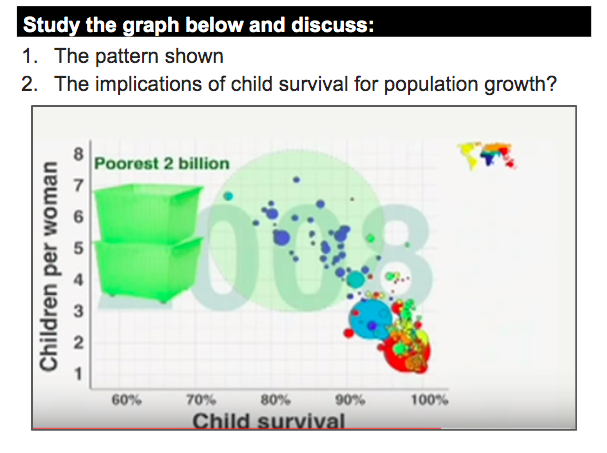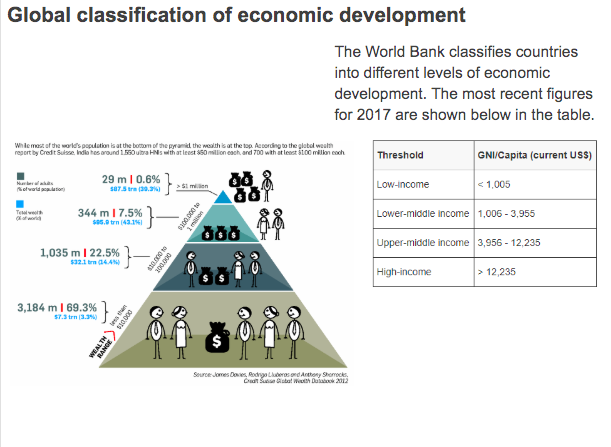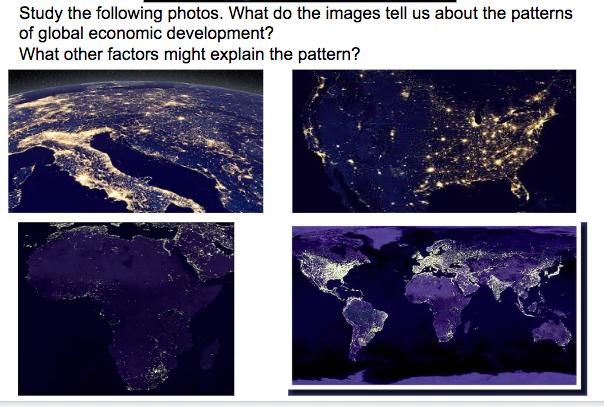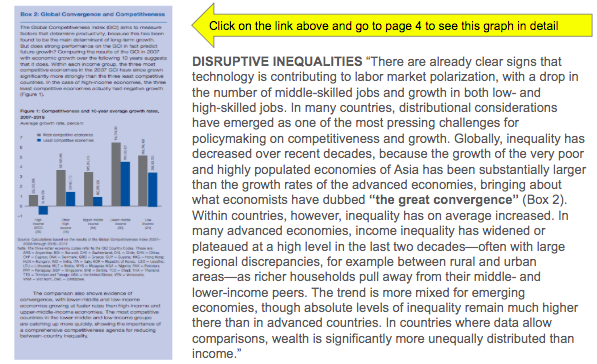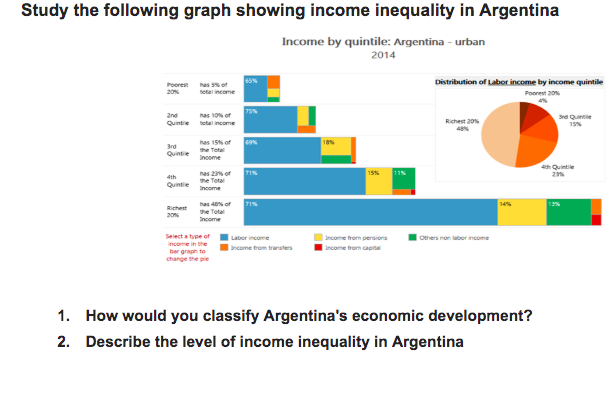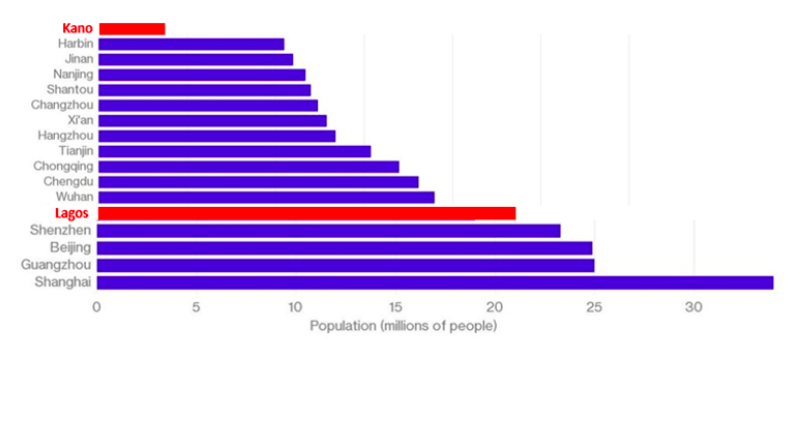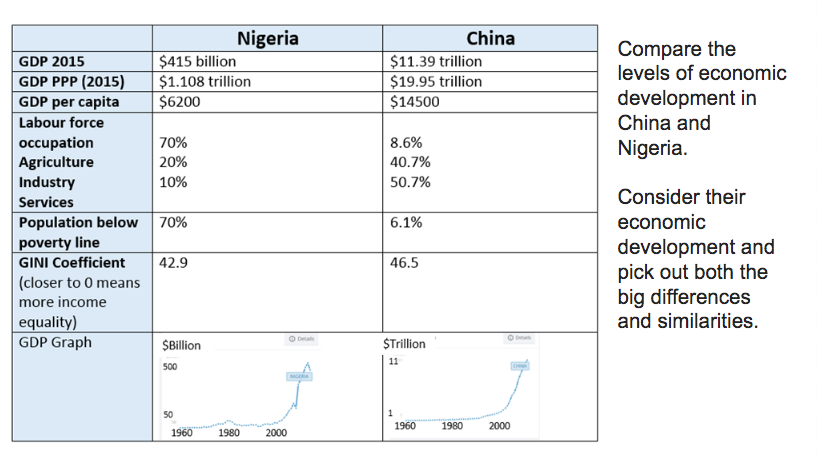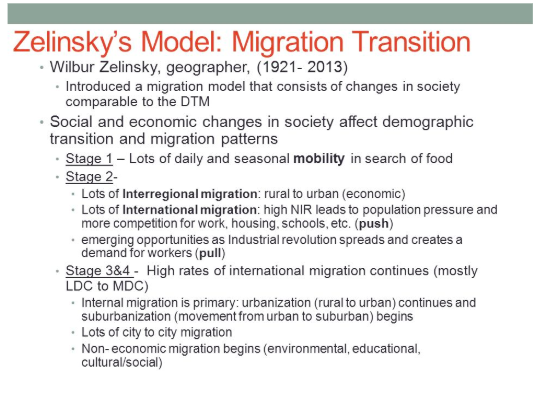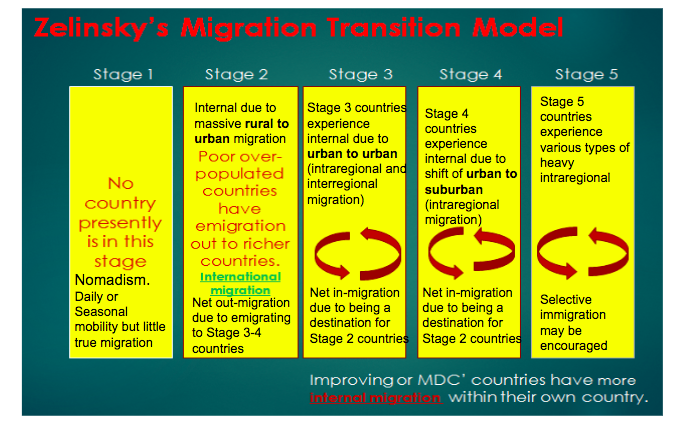Where in the world are all the people?!?!
- Check out Poodwaddle Population Clock
Why is the population uneven across the globe?
What do you know about the world and its population?
Take the following 13-Question Gap-Minder Quiz about the world’s population
You will get 13 fact questions. There's a time limit of 45 seconds per question.
You will get 13 fact questions. There's a time limit of 45 seconds per question.
|
After you complete the GapMinder test make a note of your score.
|
|
|
|
Click on the following link to see the world mapped by income (interactive map)
|

Hint: if you do not know why its irrelevant today, click on the link to BBC--you’ll find the answer.
|
|
Answer the following using the GapMinder video to the right:
|
|
|
Read the following excerpt from Disruptive Inequalities, page 4 The Global Economic Forum Report, 2018:
|
For the images below, if you need to see the details better, click on the following link and change the date on the map
|
|
For the graph and questions below, click on the following link to go to the interactive graph of Argentina’s Income provided by the World Bank.
|
While Global Patterns of Economic Development Also check out and compare countries on the following sites:
|
Case Studies:
Population Density and Development in China and Nigeria
Why did some Asian economies boom in the 1980s while Sub-Saharan African economies stagnated?
How does migration impact population demographics?
|
|
|
Case Studies on Migration and Demographics
Read and Take Notes and be prepared to discuss:
- The Great Green Wall (National Geographic)- Building a different kind of wall in Africa. Read and take notes. Consider how this article connects immigration with demographic transition.
- Causes and impacts relating to forced and voluntary migration (BBC) Take notes, based on your understanding population demographics and DTM, the correlation between population, stages of development and migration.
Global Migration Data Portal
The Portal aims to serve as a single access point to timely, comprehensive migration statistics and reliable information about migration data globally. The site is designed for policy makers, national statistics officers, journalists and the general public interested in migration.
Harnessing the Demographic Dividend
- Click here for the Interactive Demographic Dividend Infographic
Harnessing the Demographic Dividend:
Case Study - South Korea
|
Study the Slideshow of the changing population structure of South Korea from 1950 up to 2020.
Annotate your own chronology of population pyramids to explain the conditions of dependency and to show where the demographic dividend emerges. |
Study the following graphs and describe the benefits attained in South Korea from bringing fertility rates under control.
|
Additional Resources:
Websites
- GapMinder.org (demographic data by Hans Rosling)
- DTM - Demographic Transition Model explained - BBC GCSE test prep
- PopulationPyramid.net
- “Have Three Or More -- If You Can Afford It” - GOV.SG e-doc on gov website
- SingStat - Population and Immigration Statistics - GOV.SG stats website
- International Migration Statistics - Migration Policy Institute (MigrationPolicy.org)
- Malthus vs Bosurus Theory of Population Growth - BigPictureEducation.com
- IfItWereMyHome.com - Country Comparisons
- CIA World Factbook
- World Population Clock
- Poodwaddle - World Health Clock
- 4 Waves of American Immigration (teacher's website)
- ThoughtCo - Articles and Information on Population
Population Articles
- Why 80% of Singaporeans Live in Government-Built Flats” - The Economist
- Singapore’s Pop Policy - Restrictive to Expansive - Background Reading Doc
- Generation 2025 and Beyond: The critical importance of understanding demographic
trends for children of the 21st century (UNICEF Report, 2012) - Overpopulation in Bangladesh: A Time Bomb Ticking (Article, The Financial Express, 2013)
- China's Twilight Years (Article, The Atlantic, June 2016)
- India's Population Rise Puts it On Course for Rapid Growth (Article, The Independent, 2015)
- Parenthood Policies in Europe (BBC News)
- The Nazi Racial State - Third Reich (BBC History article)
- U.S. Eugenic Laws in 1960’s forced sterilization of 60,000 people (HuffPost article)
- Payment to Eugenics Victims in North Carolina, USA - People of Color Targeted in Policy (NPR article)
- The World as 100 People (Image)
- Population - Country Demographic Data Tables - 2016 (PDF Demographic Data Tables, Population Reference Bureau)
- Diffusion: "We've been looking at the Spread of Global Pandemics All Wrong"
- Russia Trolls 'Spreading Vaccination Misinformation' to Create Discord (BBC, 24Aug2018)
- Child Vaccination Numbers fora in England (BBC 18Sep2018)
Migration Articles
- Mapped: "How the Creative Class is Dividing Cities" (Washington Post 2014 -- a look at changing urban patterns)
- U.S. Has Highest Share of Foreign-Born Since 1910, With More Coming From Asia (NYTimes)
Interesting for entertainment value:
